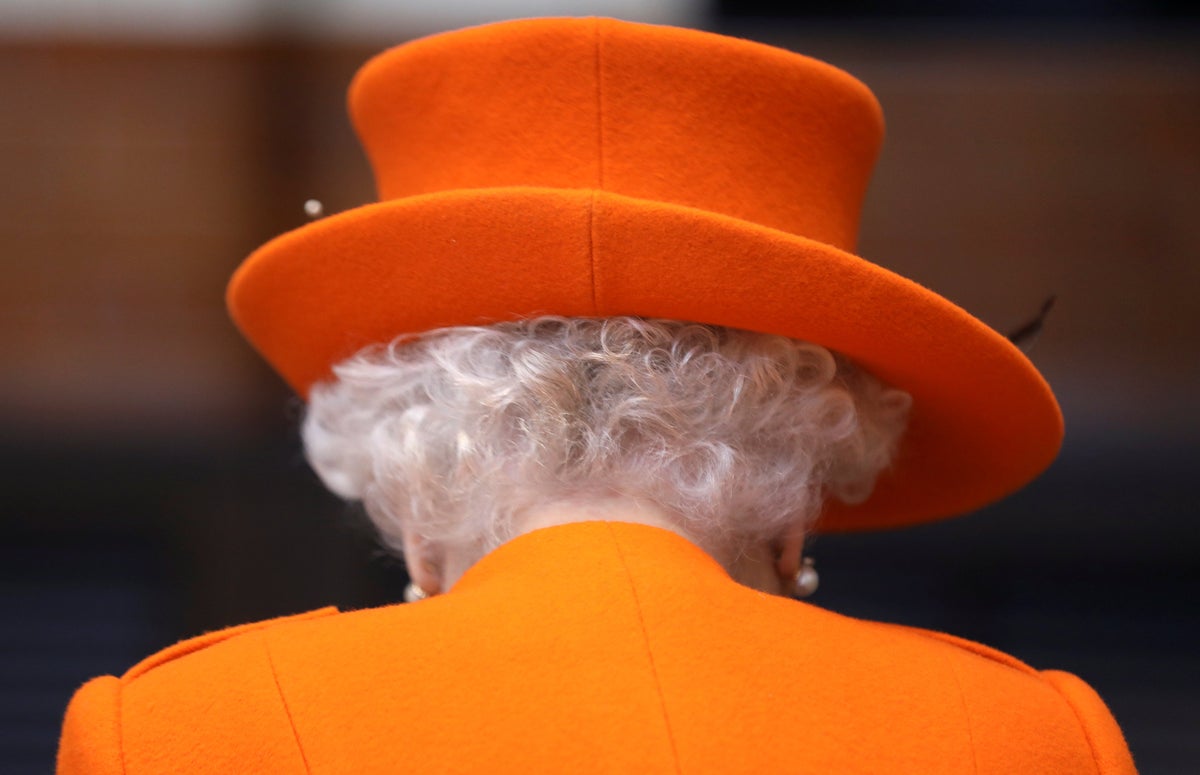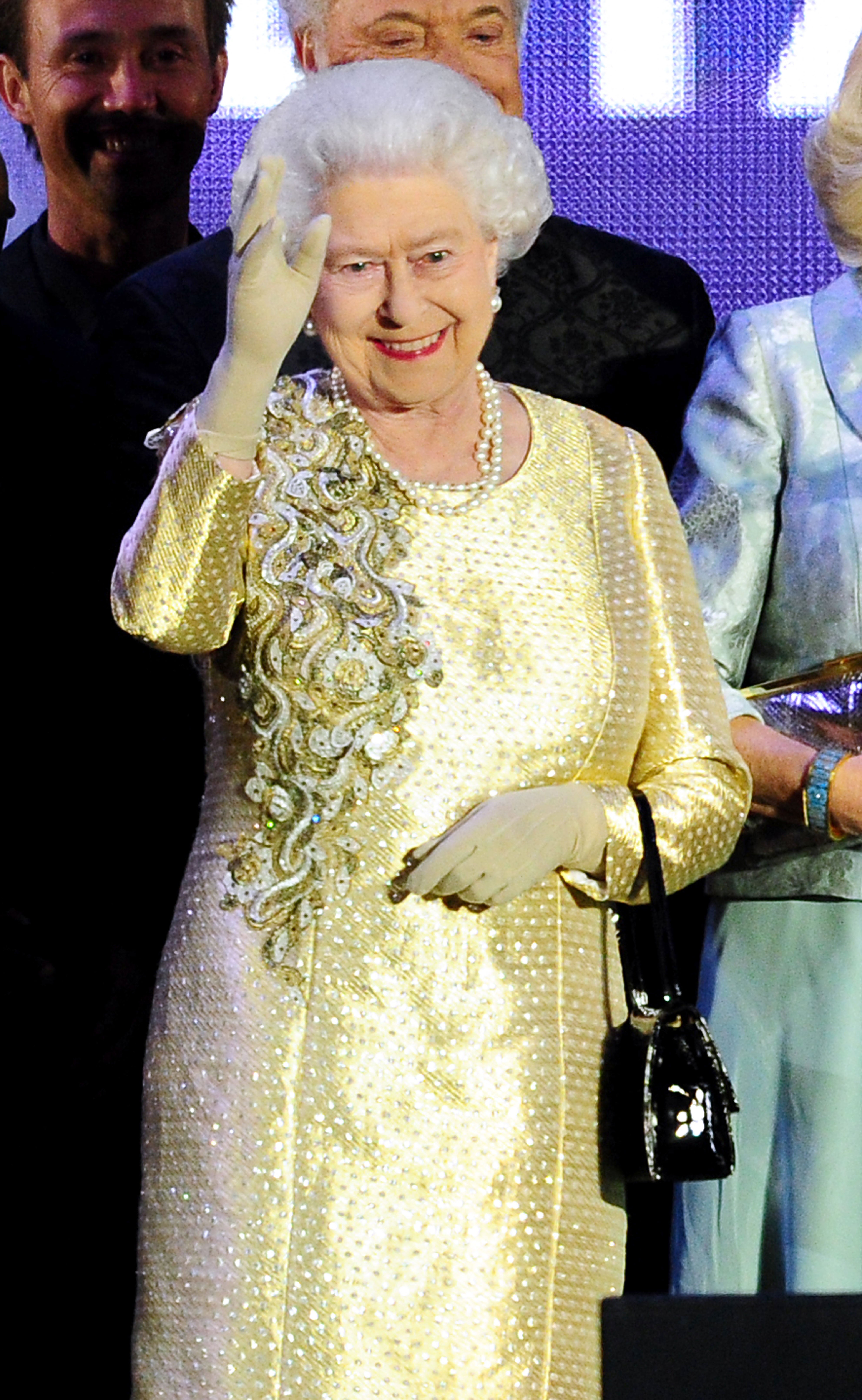
The Queen’s style has been an integral part of her public life throughout her 70 years on the throne.
Her instantly recognisable wardrobe of vibrant, block colours and matching hats ensures she stands out from the crowd, making her purposely more visible to wellwishers during royal engagements.
The monarch’s neatly curled hair, pristine black or white gloves, black patent Anello & Davide loafers and her trusty black Launer handbags have remained staple parts of her look.
They echo the stability associated with her record-breaking reign.
The Queen also uses her outfits as diplomatic tools.

Colours, motifs and jewellery with special symbolism are used to honour the guests she is greeting, or the countries she visited on her overseas royal tours.
Trips to Canada featured red and white ensembles in tribute to the Canadian flag, along with her diamond maple leaf brooch, while her first high profile and diplomatically sensitive visit to Ireland saw the monarch choose green – the Republic’s national colour.

Angela Kelly, the Queen’s senior dresser and personal adviser, revealed the behind-the-scenes tricks used for the monarch’s attire.
She sews in extra layers of lining to cushion the impact of beading and crystals on the Queen’s back when events require glamorous gowns.

Tiny weights are also put into daywear hemlines in case of windy weather, and fabrics that crumple or could potentially develop messy loose strands are avoided.
Kelly – who has the same size feet as the Queen – wears in the monarch’s handmade new shoes beforehand to ensure they are comfortable when first used.

Visits to schools see extra flourishes added to entertain youngsters.
“When Her Majesty visits a school or a children’s centre, she is always dressed in a bright, jolly colour, and her hat has the kind of details that will appeal to youngsters – feathers, twirls, twists, flowers and ribbons,” Kelly revealed in her book about her working relationship with the Queen, titled The Other Side Of The Coin.

At nursing or residential homes, the Queen wears strong colours to help those who are visually impaired, and on walkabouts, the crown and brim of her hat will be taken into account.
The thrifty Queen re-wears and adapts her clothes, with the average lifespan of an outfit running to 25 years.
Colour co-ordination is key – even down to her umbrellas.
The monarch has see-through “Birdcage” brollies made by the Fulton group to match each outfit in case of wet weather, with the edging and handle corresponding to the exact shade she is wearing.

The Queen was a regular wearer of fur but since 2019 only fake fur is used to make sure she stays warm in winter.
Over the years, the Queen’s style has gradually evolved.
The start of her reign saw classic couture creations of silk and tulle evening gowns by Sir Norman Hartnell and cinch-waisted dresses by Sir Hardy Amies encapsulating Christian Dior’s New Look.

By the 1960s, there were shift dresses and petal-covered hats, and in the 1970s trendy geometric prints and occasionally turbans for day wear and flowing chiffon by Ian Thomas in the evening, while in the 1980s there were pussy-bow blouses.
Couturier Stewart Parvin became a favourite and began crafting clothes for the Queen in 2000.

Kelly is now the Queen’s in house go-to designer for day and evening wear, and often uses Swarovski crystals to add glamour to grand royal occasions.
Off duty, the Queen likes to dress for country life in a blouse and A-line skirt with a green waxed or quilted coat or a rain mac, her wellies and her familiar silk scarf knotted under her chin.

Nods to her milestone celebrations are often weaved into key pieces for anniversaries and jubilees.
The gold dress the Queen wore for the 2012 diamond jubilee palace pop concert was influenced by the golden figure on the Queen Victoria Memorial, around which the stage was constructed.

The national platinum jubilee celebrations offer the perfect opportunity for the nation’s longest reigning monarch to debut platinum-influenced pieces or jewellery, channelling the historic occasion through her fashion.







